Woodside on path to becoming BHP of energy
Woodside holds all the cards as the oil and gas sector prepares itself for the looming energy shift.
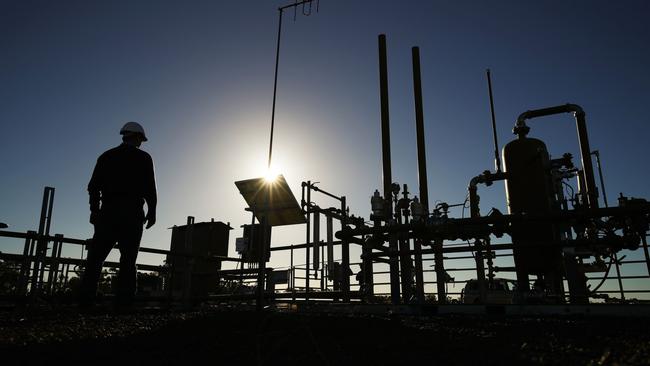
Woodside is on the path to becoming the BHP of energy as it eyes the blockbuster combination with smaller rival Santos as consolidation races through the world’s oil and gas sector.
Takeover talks disclosed by the pair late on Thursday remain just that for now: incomplete and no certainty of a deal being done. However, it raises the prospect that Woodside could emerge as an $80bn global energy major with operations spanning oil and gas across the Gulf of Mexico, Africa, PNG and Australia’s gas rich North West Shelf.
Any deal too would represent the dramatic conclusion of a four-way energy merger, that in recent years has seen the dramatic reshaping of Australia’s corporate energy players.
Woodside in the past two years has itself been catapulted into the top ranks of energy through its acquisition of BHP’s petroleum assets. At the same time, Santos sought to up its own claim in LNG with the acquisition of PNG-based Oil Search.
However, the talks to explore options underscore the need for big energy to secure scale as the demand for oil and gas faces its own challenges in coming decades.
Demand for gas is expected to plateau heading into the next decade before tailing off into 2050 as the world looks for other energy options. However, production is forecast to fall away at a faster rate, leaving the world with a critical supply shortage even in the race to green energy.
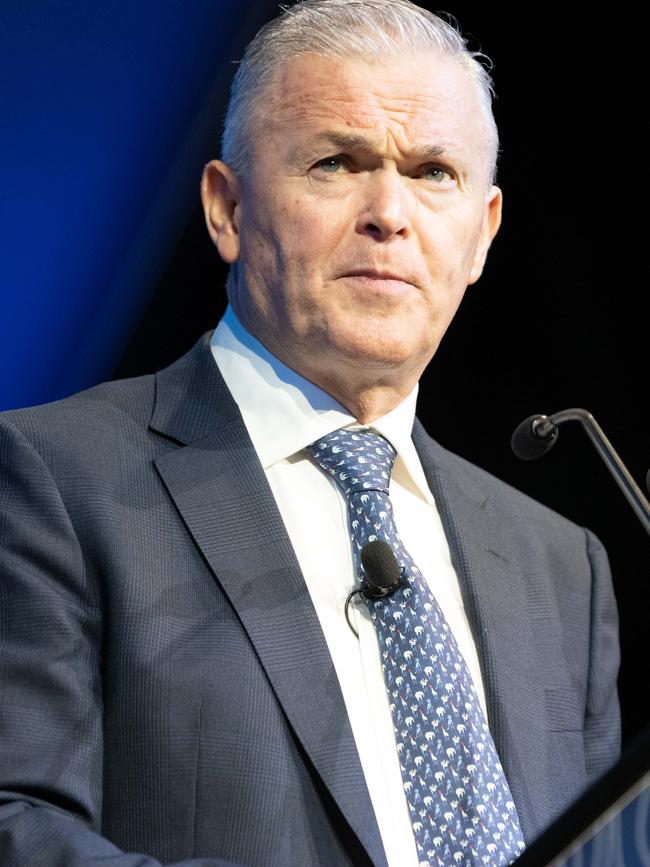
Any combination with Santos will again change Woodside’s earnings profile, making it again more gas rich where payback hurdles on projects are lower.
For Santos, the perennial mid-tier producer, a tie-up with Woodside helps it overcome the scale problem as it seeks to get a number of its big bets underway, including the Barossa gas project in the Northern Territory and Dorado in the North West shelf. Santos itself is facing a declining production profile from known projects. Santos boss Kevin Gallagher late last month confirmed the energy major was working with its bankers to consider “structural alternatives, portfolio optimisation and strategic opportunities”. Talks with Woodside help put Santos on the map for other deal hungry energy players.
In recent months, US giant Exxon made a $US60bn ($92bn) move in shale oil rival Pioneer
Flush with cash from its recently acquired oil assets, Woodside has promised to be a more disciplined manager of capital, including sending more back to shareholders rather than chasing greenfield bets. It remains to be seen if the latest temptation stacks up.
BHP’s succession plan
As Mike Henry passes the halfway point as chief executive of BHP, he has set in train a well-oiled succession plan aimed at carrying the miner deep into the next decade.
Henry’s executive reshuffle earlier Thursday has introduced new names into the leadership pool designed to eventually take over from him. The changes too have elevated some as part of longer-term planning when Henry is long gone, while the key contenders remain untouched by the reshuffle.

To make the moves possible, David Lamon the chief financial officer and only Australian in BHP’s very top ranks has paid the price. The 58-year-old career finance executive has been edged out of his role to make way for new talent, but has been kept as part of the miner’s senior ranks.
Lamont, who was recruited back to BHP from CSL just three years ago and was never expected to be in the running as CEO, has now been moved into an undefined but broad executive role for the next year. Here Henry still hopes to tap Lamont’s “grey hair” expertise while a younger management team gets settled.
Three-way race
Henry took charge of BHP nearly four years ago and since then has been in a rush to radically reshape the mining major. He has doubled down on so-called future facing commodities through the $10bn acquisition of Oz Minerals, to deliver BHP much needed growth in copper and nickel.
At the same time, he made the tough call of exiting BHP’s capital intensive oil and gas portfolio, spinning off BHP Petroleum into Woodside Energy through a complicated merger.
Along with his outgoing CFO, Henry engineered the collapse of the 20-year-old dual-listing structure that had increasingly become a drag, while pursing further sales of legacy coal operations. With the big calls made, including the OZ buyout and multi-billion potash investment, Henry has picked this moment renenergise his executives. Indeed he signed-off on the top level overhaul while in Shanghai to attend a steelmaker event to celebrate the delivery of three billion tonnes of BHP’s iron ore into China.
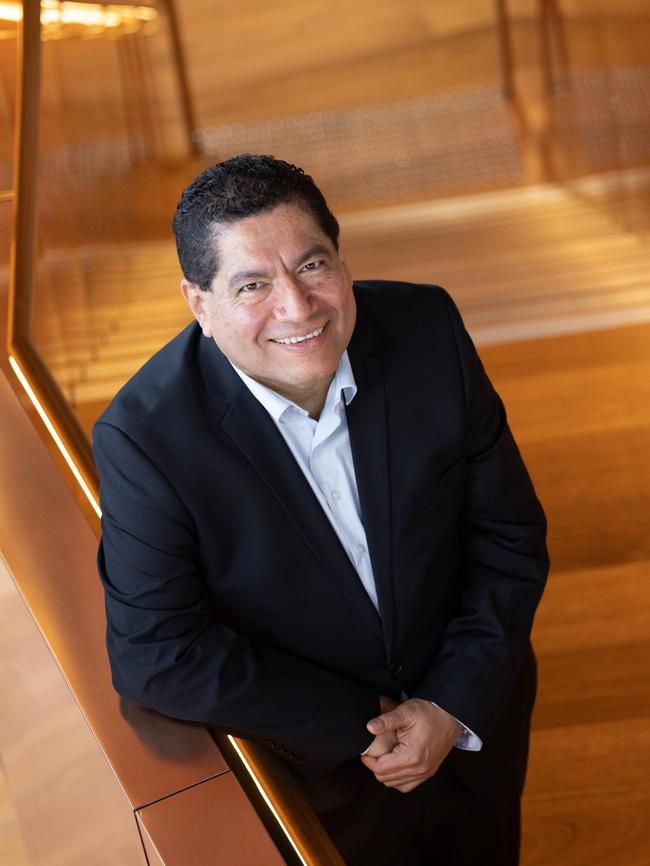
The biggest winner of Thursday’s reshuffle sees the rapid elevation of Singapore-based and well-regarded Vandita Pant as chief financial officer, taking over from Lamont in March. Currently, Pant is chief commercial officer, looking after BHP’s sales and marketing as well as maritime operations.
However, BHP doesn’t have a history of appointing their CEO from the chief financial officer position, opting for operations executives. Although Chip Goodyear became the exception two decades ago.
Edgar Basto’s position has been left untouched. As chief operating officer, Basto is BHP’s most powerful executive behind Henry, with oversight of the entire company. He has previously run Western Australian iron ore and is now overseeing the development of BHP’s copper expansion in Australia.
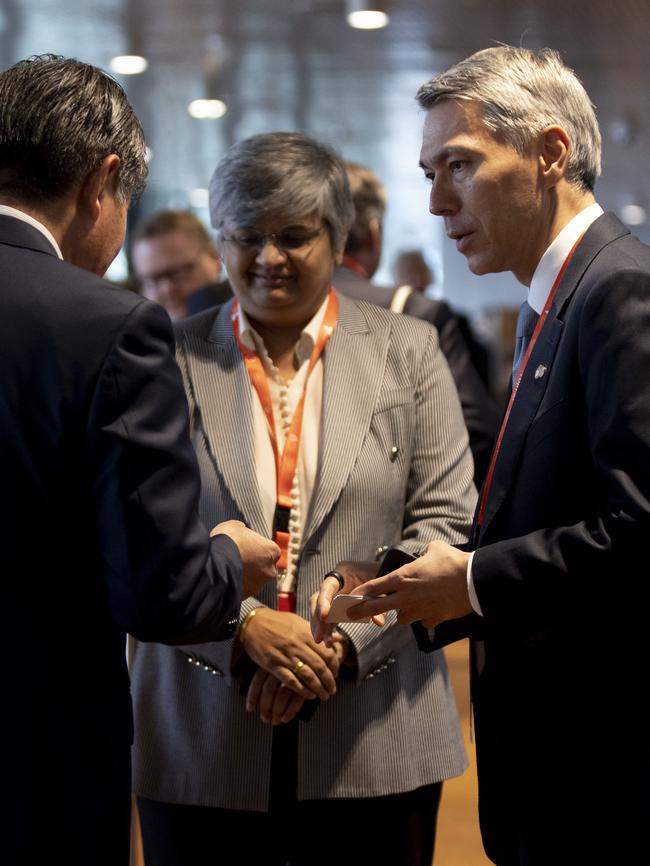
Importantly, Geraldine Slattery’s role also remains unchanged. The daughter of Irish dairy farmers who became a petroleum executive now oversees BHP’s influential Australian operations, including its critical West Australian iron ore businesses. Prior to being elevated to chief executive, Henry held the Australian operations’ role.
Between Basto, Slattery and Pant opens the three-way race in the succession stakes. Significantly that includes two women in the mix to run Australia’s biggest company.
Others too are coming into the frame with Henry testing executives in new roles. Rag Udd takes over from Pant as chief commercial officer. This rounds out Udd’s experience, who has until now been a big driver of getting BHP’s ambitious Canadian potash bet off the ground from an operational sense as President Americas. Potash has been promised be a big contributor to the BHP portfolio for decades to come.
This responsibility now goes to Brandon Craig, who joins the top executive ranks as President Americas. Craig currently oversees Western Australia Iron Ore, reporting through to Slattery. Craig’s role as head of America’s will be to continue to deliver the giant Jansen Stage 1 potash project in Canada. Construction is still underway and just last month BHP signed-off on a $US5bn ($7.6bn) plan that gives a green light to an expansion through to the next decade. Success here could put Craig into longer term contention for the top job.
Meanwhile Johan van Jaarsveld who has been overseeing BHP’s M&A as chief development officer is on the fast track and is set to be moved into the chief technical officer role that
takes in M&A. Van Jaarsveld’s former development role will remain at the executive leadership level, with a candidate to be announced in the future. This is a sure sign that BHP is not done yet with acquisitions under Henry. Van Jaarsveld replaces Laura Tyler who leaves the company after 20 years.
A big behind the scenes move in Henry’s management has been the rolling out of the BHP Operating System, a project he started as head of Australia. He has previously argued to all successful global companies are build around a consistent operating model regardless of who is in the management chair. Henry’s BHP operating system is designed to cut through management change and deliver high performance for the long term.
BHP’s board has a highly methodical approach to succession planning with executives usually tested in a commercial and operational roles across the company. Through this the miner also develops near term and longer term candidates.
BHP board members are involved in the interview process for executive-level appointments one level below the CEO, and occasionally for roles two levels below the chief executive. The last external candidate was Paul Anderson who joined BHP from Duke Energy.
Seven’s numbers man
Free-to-air television in Australia is only going to get tougher, and the appointment of top numbers man and one-time investment banker Jeff Howard as Seven West Media’s next chief executive officer suggests the coming years will all be about cost control over content.
Kerry Stokes’ hand-picked CEO James Warburton has flagged his intention to step down from Seven West in coming months, although that doesn’t mean the end of his executive career. It’s been said it is better for a CEO to go a year too early than a year too late, although at just over three years as chief executive, Warburton’s time running Seven West is certainly short.
Warburton a self described turnaround specialist, had started fixing Seven’s problematic balance sheet including $150m of asset sales early on. He has overseen record ratings for Seven and renegotiated the crucial extension to AFL broadcast contract as well as substantially revised the cricket rights deal.
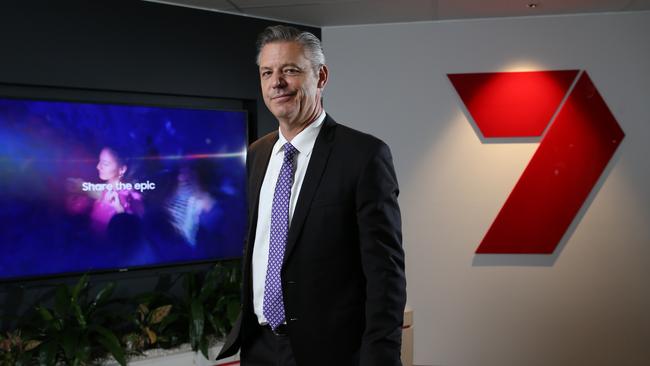
Warburton has got Seven back into the broadcast video on demand race with the Seven Plus, which now remains a bright spot in a TV market that is forecast to decline at low single digit rates in the coming year. He also managed to eventually buy out regional affiliate Prime for $133m late in 2021. However, all this has failed to fire up investors, with Seven West’s shares down more than 45 per cent this year and around a post-Covid funk. This remains a weak link in Stokes’ broader Seven Group.
Where Warburton was about content and sales, for Howard the chief financial officer for the past three years, its all numbers.
Howard’s elevation delivers a twist on Stokes’ ARN battle. Last month Stokes, through Seven took a 14.9 per cent stake in radio kingmaker ARN which counts KIIS FM stars Kyle and Jackie O as part of its stable. Of course until 2020 Howard was the chief financial officer at HT&E’s the predecessor of ARN.
A former banker with RBS and an accountant with KPMG, Howard has a balancing act ahead. Seven’s balance sheet remains under pressure. Net equity is just $378m, held up by more than $700m of intangibles such as broadcasting licenses and another $176m of programming inventory. Net debt manageable at a little under $250m although there is a $600m facility due to be renegotiated later next year with higher interest rates likely.
Warburton carved out a defining role for himself before Seven, running the V8 Supercars franchise on behalf of former owner, private equity player Archer Capital for five years. Remember he also left Seven initially after being lured across to run the then listed Network Ten.
The 54-year-old Warburton says he is looking forward to the next chapter of his career. Meanwhile, one of new boss Howard’s first jobs will be to keep Seven’s chief revenue officer Kurt Burnette onside. Burnette is now facing his third CEO since being appointed that job ten years ago.
johnstone@theaustralian.com.au





To join the conversation, please log in. Don't have an account? Register
Join the conversation, you are commenting as Logout